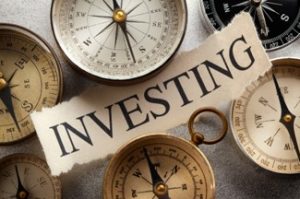
Be Like Buffett: The Merits of Passive Low-Cost Investing
 In his will, renowned businessman and investment strategist Warren Buffett reportedly left instructions for his heirs to invest in index funds, based on a belief that those funds would outperform actively managed, higher-fee investment vehicles such as mutual funds.
In his will, renowned businessman and investment strategist Warren Buffett reportedly left instructions for his heirs to invest in index funds, based on a belief that those funds would outperform actively managed, higher-fee investment vehicles such as mutual funds.
“A low-cost index fund is the most sensible equity investment for the great majority of investors,” Buffett asserts in his book, The Little Book of Common Sense Investing.
Mainstream investors appear to be heeding that assertion. During 2016, index funds and other types of so-called “passive fund strategies” in the United States took in a record $504.8 billion, according to the investment research firm Morningstar, while active funds — mutual funds whose portfolios of assets are actively shaped by a fund manager — experienced outflows of $340.1 billion.
Passively managed funds, including index funds and exchange-traded funds, or ETFs, are investment vehicles that generally carry lower fees than actively managed funds because, rather than trying to outperform the market as many active managers do, passively managed funds are designed to track the market. Actively managed funds incur costs for research and trading in the name of outperforming the market, costs they pass on to investors. With passively managed funds, not only are those costs minimal or non-existent, “There’s no fund manager to guess and gamble which stocks are going to outperform the market,” says Certified Financial Planner™ Rob Schmansky of Clear Financial Advisors, a wealth management firm with multiple offices in Michigan.
The key reason investors are taking a page out of Buffett’s playbook and migrating their assets to passively managed types of investments is value. Every dollar you pay for management fees or trading commissions is simply one less dollar that’s potentially earning on your behalf. Due to lower costs, passive investments allow a person to hold onto a larger share of the gains from their investments — gains that may compound upon themselves over time. For passive funds, the asset-weighted average expense ratio was 0.18% in 2015, about one-quarter the 0.78% average for active funds, according to Morningstar.
What’s more, passive investments may actually perform better than their actively managed counterparts over time, further increasing their value. Fund company Vanguard compared the 10-year records of the 25% of funds with the lowest expense ratios and the 25% with the highest expense ratios. The low-cost funds outperformed the high-cost funds in every single category.
That outperformance can make a major bottom-line difference in the long-term value of an investment. Vanguard looked at two scenarios involving a 30-year investment horizon, an initial investment of $100,000 and an average annual growth of 6%. In one scenario, the investor is charged an average cost of a quarter of a percentage point (0.25%) on their assets each year. In the other, the cost to the investor is nine-tenths of a percentage point (0.90%), which is about the average expense ratio for U.S. stock fund investments. After 30 years, the investor in the lower-fee scenario would have $100,000 more in their account than the investor in the higher-cost scenario.
The huge variety of passively managed funds available today gives investors the means to build a diversified investment portfolio that includes various classes of stocks, assorted types of bonds, and other asset classes, such as real estate or commodities. For mainstream investors, “They’re a good tool for diversification. They fit into a financial plan by allowing you to take an exact amount of market-based risk in the exact places you want to invest,” says Schmansky.
How to access lower-cost passive investments? They’re offered as investment options within many retirement accounts, including 401(k)s as well as traditional, Roth and SEP IRAs. Investors also can purchase them for a taxable investment account. In the case of a 401(k) or IRA, for example, an investor can execute a rollover in which they instruct their plan administrator to move assets from an actively managed fund that holds S&P 500 stocks to a similar index fund or ETF whose value is linked to the movements of the S&P 500.
As appealing as the passively managed value proposition may be, there’s still a place for actively managed investments inside many investment portfolios, notes Schmansky. “Costs are important [in choosing investments], but they shouldn't drive your decision-making.”
Certain actively managed funds consistently outperform the market, making them a good value despite higher fees. What’s more, an actively managed investment may be the only available option to gain access to a specific equity position or fund manager desired by an investor.
Still, it would be a mistake to ignore the merits of ETFs, index funds and other passively managed investments. Because as Warren Buffett and millions of other investors have discovered, over the long haul you may be better off trying to track the market rather than trying to beat it.
